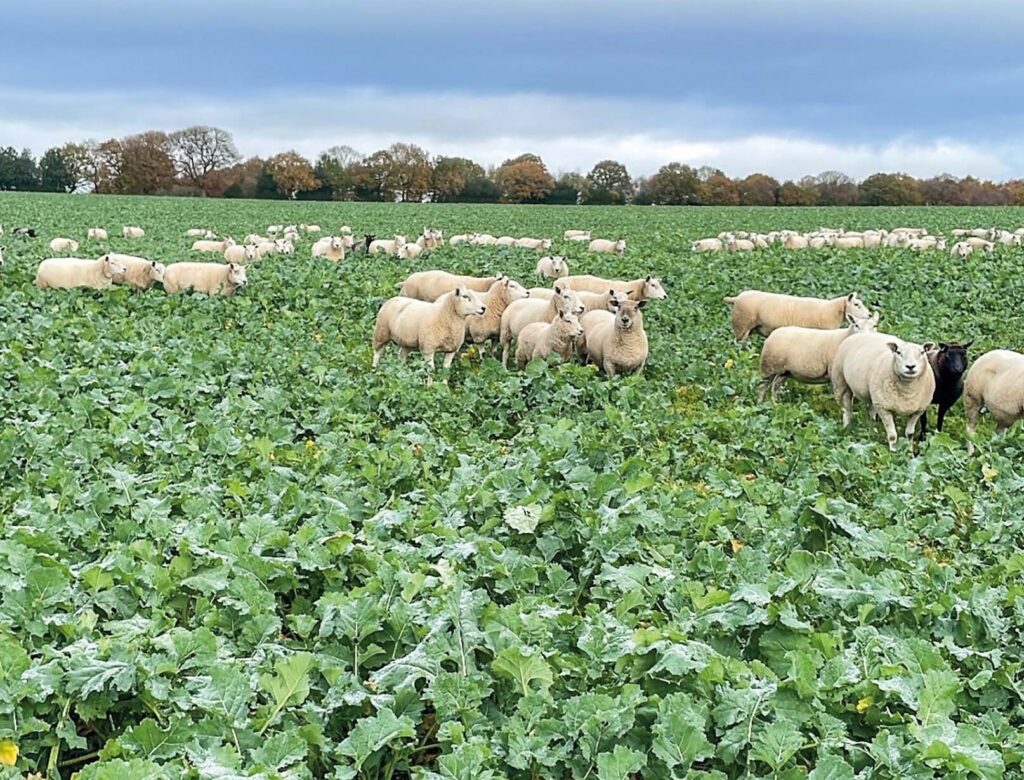Sheep add to farm’s OSR flexibility
4th May 2022
Grazing forward crops with sheep is part of the extra flexibility Staffordshire grower, Rob Atkin, is building into his oilseed rape growing at Field Hall Farm, just outside Uttoxeter, to cope with the increasingly uncertain climate.
It is proving especially valuable this season for earlier sowings on fertile silt ground going into the winter far too thick for comfort, following excellent establishment and oneof the growthiest autumns in recent memory.
All 11.4ha of the DK Excited drilled on 5th August 2021 were grazed for a week in mid-November, together with a section of the Agrii iFarm’s variety trial field as a demonstration. This and the rest of Mr Atkin’s 50ha of the crop – mainly split between DK Excited and long-time favourite, DK Exalte – were sown from mid-August.
In a cost-sharing agreement with a local shepherd, who takes responsibility for fencing and flock management, sheep have been a part of the family’s 450ha mixed arable and beef business for a good while now, grazing-off the stubble turnips that continue to be their favourite cover crop ahead of spring barley.
Although this is the first time sown OSR has been grazed, sheep were put onto a small area of very well-grown OSR volunteers ‘too good to waste’, taken through to harvest last season with considerable success. Despite minimal inputs, this delivered a very encouraging 2.5t/ha.
Last year, too, Mr Atkin found how useful sheep grazing could be in taking out spring barley volunteers as well as black-grass, and particularly problematic brome, from a small area of winter wheat. So, in a farm-scale trial, he also gave ewes access to the most forward 15% of his 200ha of winter wheat this season, grazing September and early October crops of Graham and Fitzroy on the farm’s heavier Keuper marl ground to three different heights in February.
“Having access to sheep, we wanted to see if we could make better use of them,” he says. “My grandfather always found them valuable on his winter barley. So, I guess we’ve come full circle.
“Continuing to grow winter barley means we’ve been able to move our OSR sowing forward to make sure it gets away from the large numbers of game birds we have here, as much as CSFB. Thankfully, they have never been really bad on our oilseed rape so far. But they’ve ravaged our stubble turnips in the past, making us acutely conscious of the risk they pose.
“When our five-year rotation puts the OSR on our most fertile ground, though, this approach and the sort of autumn and winter we’ve had this season brings with it other challenges. By last November our early-sown crop, in particular, dwarfed our Labradors with a worryingly over-thick and over-forward canopy.
“Which is where the sheep have really been useful, removing almost all the foliage and with it, we very much hope, early disease as well as any CSFB larvae,” points out Mr Atkin. “They have also opened-up the crop nicely and provided extra manure, of course.
“It certainly took courage, and we were very careful to move them on quickly. Immediately after grazing, the crop looked pretty bare – particularly one area that was taken down a little too far. Even this recovered well as the crop grew away strongly from winter, however. In fact, it probably had a better structure going into stem extension than the later-sown crops we didn’t graze. Come harvest, our yield maps will make very interesting viewing.
“With sheep in our armoury in addition to the traditional seed, fertilisation and crop protection tools, it looks like we may have a very valuable extra risk management tool.”
Rob Atkin’s top tips for sheep grazing OSR:
- Graze crops that are particularly well-developed before Christmas
- Chose hybrids with superior recovery abilities and fast spring regrowth
- Back-fence to ensure favoured areas of the field for lying aren’t over-grazed
- Check the severity of grazing daily, if not more frequently
- Always have the next area fenced so stock can be moved on promptly when needed.

